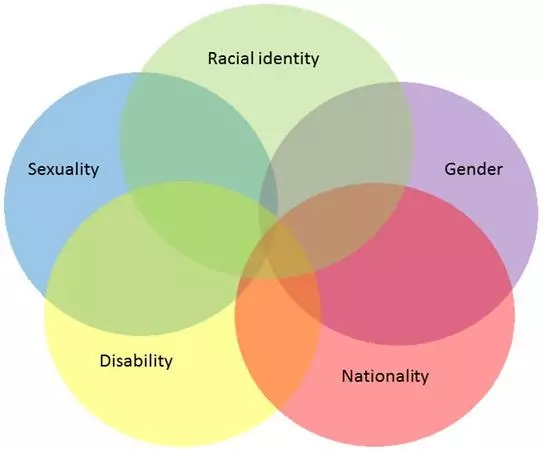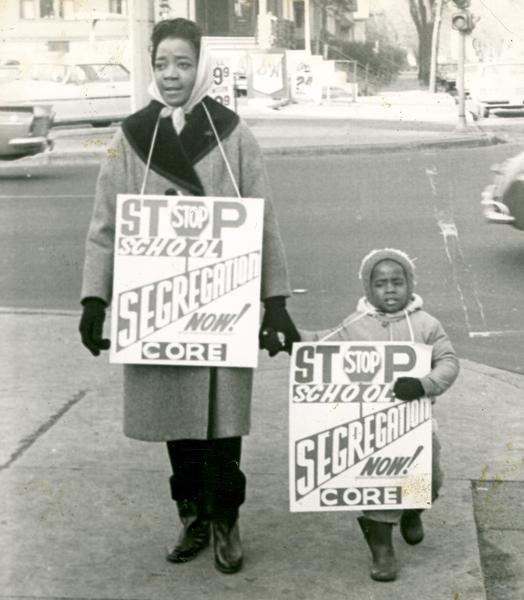Analysis, impressions and insights in I Look at the World.
In I Look at the World the poet, Langston Hughes, reflects on
the struggles African Americans face under segregation while
using his observations to call for an end to this oppressive system.
In order to better analyze this poem in detail and share my
interpretation of its meaning, I need to shed some light on the
historical background events surrounding this struggle, then
emphasize intersectionality highlighting that everyone has their
own experience of discrimination. Finally, I need to elaborate
further on Hughes’s steps taken to build his poem leading to a
final point of greatest intensity: a call to action. All this to prove
that no matter how old this poem is, segregation is still relevant
in our current times and finding a way to combat it is as urgent
now as it was in the sixties.
The poem was written in 1930, in New York city, during the era
of the African American cultural movement: the Harlem Renaissance.
It was considered a great time for showcasing creativity in theater, literature,
poetry and music. The Harlem Renaissance was a result of the
South to North Great Migration due Jim Crow segregation laws
that have oppressed African Americans. Hughes was a major figure in
the Harlem Renaissance. His poem I Look at the World is a written
reflection of the struggles African Americans face because of
segregation. The experiences of African Americans who came
from the South brought with them a revolutionary spirit that
was reflected in Harlem’s culture and soon influenced the civil
rights movement of the 1950s and 1960s. The message of the poem
serves as inspiration for those currently fighting injustice.
The culture that came from Harlem helped influence campaigns
against the systemic oppression African Americans faced in the
South and still face nowadays as a result of the overlapping
social identities and what comes with it in the form of
discrimination affecting all stages of life.
Intersectionality helps us delve into the understanding of
Hughes I Look at the World, as it highlights how segregation of
African Americans intertwined with other forms of systemic
oppression. The Oxford Dictionary defines intersectionality
as “the network of connections between social categories such as
race, class and gender, especially when this may result in
additional disadvantage or discrimination.” While
being a student at Columbia University, Hughes was denied
room access on campus because of his skin color. He eventually
was able to stay at a residence on campus but still faced racism
among his white classmates simply because he didn't fit in with the WASP
(White Anglo-Saxon Protestant) culture dominant at the time.
This is not different than our current times where there are
forms of discrimination based on race, sex, etc.… especially in
countries accepting immigrants or dealing with native
populations where a person with distinctive color of skin,
religion and racial background intersect and overlap.
That is why it is important to consider all these factors that
affect and marginalize people.

Finally, in his poem I Look at the World, Langston writes in a
rebellious tone to call for action against the oppression African
Americans face in the USA.
In lines like:
“That all these walls oppression builds
Will have to go!”
“Then let us hurry, comrades,
The road to find.”
the poet's tone dramatically shifts from observant to reflective,
then shifts to a call for action against what he labels as
“walls of oppression,”: segregation. This can be seen as a
message for a call for action against oppression African
Americans face. When it comes to sound, meaning, arrangement,
and images of words in Hughes' poem, he uses various poetic
devices to highlight the struggles African Americans face under
segregation while calling for an end to these injustices.
Through alliteration and assonance, repetition of words like,
"look" and "world," Hughes creates a rhythm that not only
draws attention to his observations but also reinforces the theme
of constantly confronting oppression. Metaphors and symbolism,
such as the "wall" representing barriers imposed by segregation,
deepen the poem’s meaning. The free verse structure mirrors the
unpredictable nature of racial struggle. Enjambment, lines like
“I look at the world / From awakening eyes in a black face,”
further enhances the tension, reflecting both the continuous fight
for equality and moments of frustration. Vivid imagery, like the
"black face" and the oppressive "walls," along with
personification of barriers, makes the struggle feel tangible.
These devices work together to strengthen Hughes' powerful call
for freedom and justice.
In conclusion, with the influence of the Harlem Renaissance, the
discrimination and privilege of American society, and the
structure of the poem, I Look at the World, is a reflection of the
struggle African Americans face due to segregation and how it
still continues today as a result of similar forms of oppression
creating culture wars.

Comments
Post a Comment